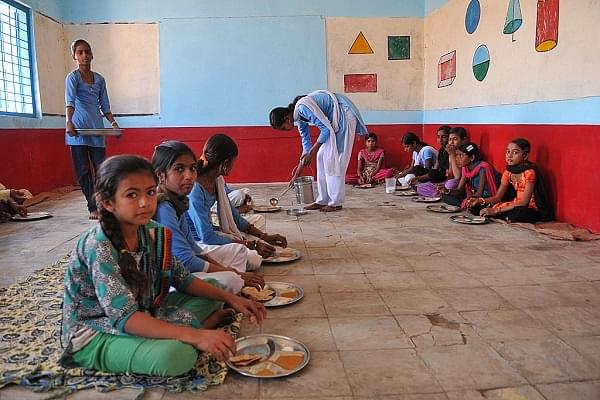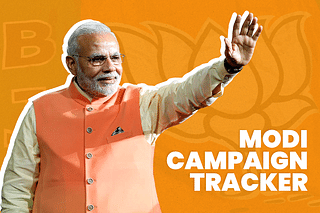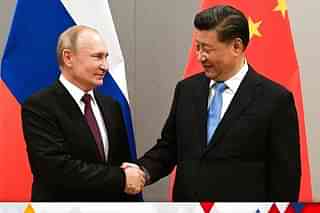News Brief
14 States And UTs Yet To Sign MoU For Implementation Of National Education Policy
Yathansh Joshi
Aug 14, 2023, 03:11 PM | Updated 03:11 PM IST
Save & read from anywhere!
Bookmark stories for easy access on any device or the Swarajya app.

Fourteen States and Union Territories, including Kerala, Tamil Nadu, and West Bengal, have not yet signed a crucial Memorandum of Understanding (MoU) with the Union Education Ministry.
This MoU is necessary for the implementation of the National Education Policy and to receive funds of nearly ₹13,000 crore over the next three years through the Centre's flagship scheme for State-run higher education.
Opposition-ruled States have expressed concerns about the MoU. They have objected that they are worried because 40% of the budget for the Pradhan Mantri Uchchatar Shiksha Abhiyan (PM-USHA) must be borne by the States themselves, and no additional funds have been allocated for NEP reforms.
The Centre is currently holding discussions to address the differences with these dissenting States.
The PM-USHA is the new name for the Ministry's scheme aimed at improving the quality of higher education in State Universities. This scheme focuses on curricular and program changes, teacher training, physical and digital infrastructure, accreditation, and enhancing employability.
It also aims to ensure equity, access, and inclusion. The scheme has an allocated budget of ₹12,926.10 crore for the period between 2023-24 and 2025-26.
The signing of the MoU by States and Union Territories demonstrates their willingness to participate in the PM-USHA scheme. This MoU is aimed at ensuring to facilitate the better implementation of the scheme.
M. Jagadesh Kumar, the chairman of the University Grants Commission, stated that as of now, 22 States and Union Territories have signed the MoUs. Discussions are ongoing with the remaining 14 States and Union Territories to address differences and emphasize the importance of the NEP and PM-USHA.
Prof. Kumar also mentioned that the scheme can be adapted to meet the specific needs of different States and districts.
The MoU has caused dissatisfaction among certain State governments as it mandates the implementation of various reforms outlined in the National Education Policy (NEP). These reforms include the establishment of an academic credit bank, flexibility in entry and exit, and the use of the Samarth e-governance platform.
According to a senior official from Kerala's Education Ministry, the MoU fails to address the issue of funding for the changes proposed under the NEP. As States bear 40% of the expenses for the PM USHA scheme, they require additional funds and assistance from the Central government to implement the NEP.
The official mentioned that like-minded States are considering a joint action on this matter.
Professor Kumar, however, stated that extensive consultations were conducted before finalizing the structure of the PM-USHA scheme. The MoU includes clauses that emphasize proper planning, implementation, and monitoring of the scheme.
By aligning the State's proposals with the NEP, integration between the two can be achieved, leading to a more cohesive approach.
The UGC Chairman highlighted that the PM-USHA scheme builds upon the vision of the previous Rashtriya Uchstar Shiksha Abhiyan (RUSA) to enhance access, equity, and quality in higher education across States. The scheme aims to streamline resources by reducing the number of components to six and providing greater flexibility for States/Union Territories to address their specific needs.
Additionally, the unit costs of certain components have been rationalized to ensure tangible outcomes.
States and Union Territories (UTs) have the freedom to select their focus districts based on different indicators, including low gross enrolment ratio, gender parity, and population proportion of Scheduled Castes and Tribes.
This approach allows for the prioritization of specific districts under the scheme to cater to the unique requirements of each state or UT, as stated by Prof. Kumar.
Save & read from anywhere!
Bookmark stories for easy access on any device or the Swarajya app.
Support Swarajya's 50 Ground Reports Project & Sponsor A Story
Every general election Swarajya does a 50 ground reports project.
Aimed only at serious readers and those who appreciate the nuances of political undercurrents, the project provides a sense of India's electoral landscape. As you know, these reports are produced after considerable investment of travel, time and effort on the ground.
This time too we've kicked off the project in style and have covered over 30 constituencies already. If you're someone who appreciates such work and have enjoyed our coverage please consider sponsoring a ground report for just Rs 2999 to Rs 19,999 - it goes a long way in helping us produce more quality reportage.
You can also back this project by becoming a subscriber for as little as Rs 999 - so do click on this links and choose a plan that suits you and back us.
Click below to contribute.





